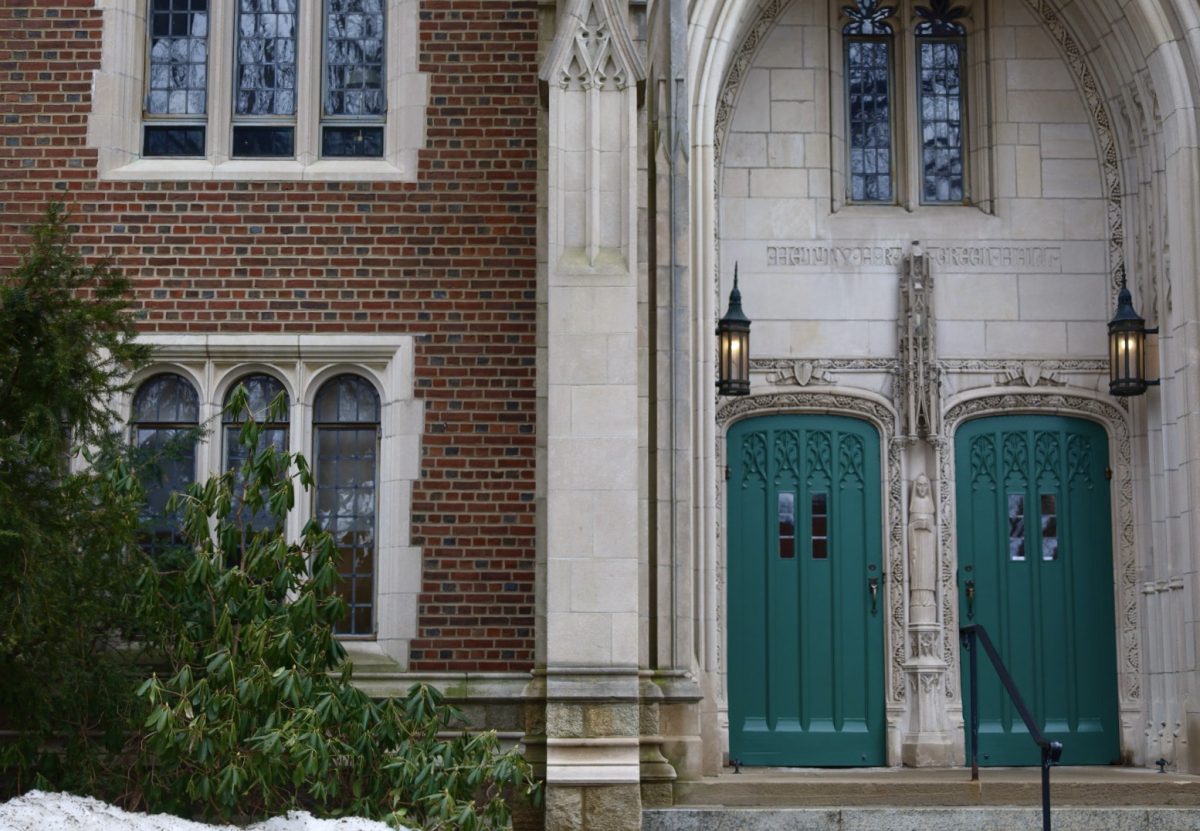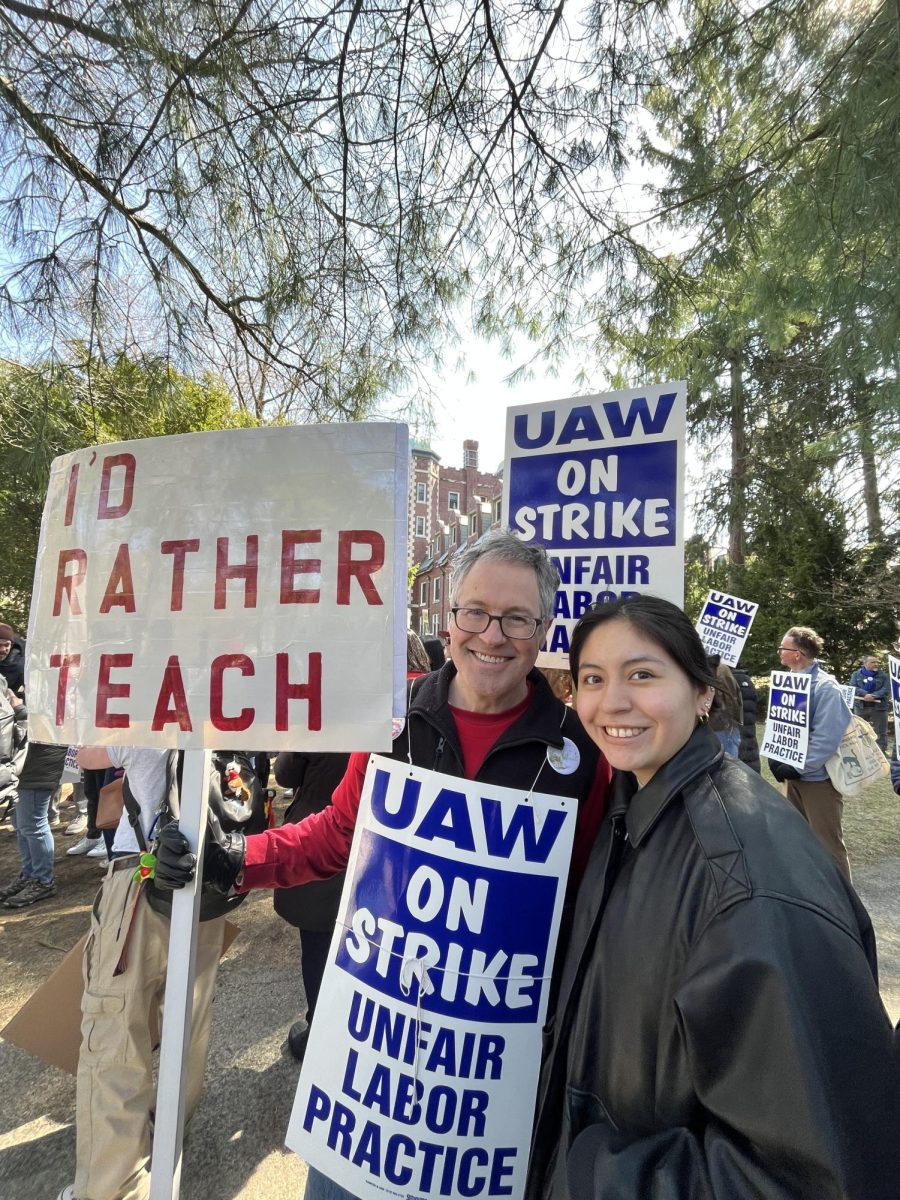Over the course of the spring semester, Wellesley College senate has debated whether or not the Students Organizations and Appointments Committee (SOAC) should be dissolved. For quite some time, College Government (CG) has internally expressed the desire to split SOAC into two different committees –– appointments and organizations, respectively –– which would result in the addition of a new cabinet member who would serve as head of organizations. Appointments would be chaired by the College Government Vice President (CGVP). Currently, SOAC is responsible for recognizing student organizations and appointing students to committees such as the Transportation Advisory Committee (TAC) and the Board of Trustees. Given the different functions of organizations and appointments, cabinet has concluded that separation is the most practical solution and publically released a proposal this semester.
“Equal attention cannot be given to either side while they exist within SOAC,” said Saafia Masoom ’20, the current CGVP and SOAC chair. Because the committee is currently responsible for both organizations and appointments on campus, Masoom and other SOAC members have noticed it is common for one to be prioritized over the other, and that this year in particular, “appointments got shoved aside constantly.”
Although Masoom and other members of SOAC saw the change as positive, some members, such as the current organizations coordinator Emily Pearson ’20, believed the first iteration of the proposed change “came completely out of left field.” Pearson expressed her concerns about the initial measure by saying, “it really worried me, because we were talking about huge structural changes.”
The addition of a new cabinet member would erase the need for two appointments coordinators and one organizations coordinator –– students who work under the CGVP. Currently these students are paid approximately $3,000 each from the student activity fee. If a new cabinet member were to be added, they would be paid a $3,000 stipend as a CG cabinet member. The split of SOAC, then, would result in approximately $6,000 of savings.
Pearson was not the only student concerned about the proposed split. In senate, the issue was debated for weeks, and students recalled being confused about the proposal throughout senate’s numerous discussions in senate and concerned about reporting the particulars of the measure and the surrounding debate to their respective constituents. According to Special Policy and Ethics Committee (SPEC) Chair Avery Lumeng ’21, from her perspective outside the scope of SPEC, “students just didn’t know what was going on when its their money.”
After weeks of discussion on the senate floor, the measure was scheduled to be voted on Monday, March 18, the week of spring break. College Government President Kimberly Chia Yan Min ’19 commented on the selection of the date acknowledging that, “Senate attendance generally declines and this time we are just going to hold ourselves to a pretty high bar.” CG had already scheduled special elections for the CGVP and the potential new cabinet position to be held the week classes resumed after spring break. If CG postponed the vote further, the incoming cabinet would be forced to hold special election next fall. Chia reflected on her own experience joining cabinet late commenting, “I took this one month to learn on the job and I would never wish that on anyone else.”
Once voting was set to begin, however, the Secretary-Treasurer realized that the senate was missing quorum by one person. For a constitutional vote to take place in senate, three-fourths of the voting body must be physically present. According to the senate minutes from March 18, one senator was sick with the flu and couldn’t be physically present. However the CG Constitution stipulates that all members must be physically present for quorum to stand. Therefore, the senator in question could not vote via Facetime.
Upon this realization, a senator who was physically present informed the body that another senator no longer represented their organization and thus quorum could be met. The Secretary-Treasurer verified that quorum was met, and the vote could proceed as planned. According to the senate minutes, the vote passed with 68 percent of senate voting in favor of the measure.
Once news of the vote rippled through campus, students and senators alike recalled feeling uncomfortable with the way the vote passed. “As a student-at-large, I felt uneasy about it. I had some questions about it,” said Lumeng, outside of her capacity as SPEC chair.
Pearson, while not at senate on the night of the vote, also questioned the legitimacy of the vote because of the lack of clarity in the senate minutes and private conversations she had had with senators present. According to Pearson, a number of senators felt confused about the vote itself, and were “unsettled by the way that it happened.”
Pearson’s uneasiness regarding the vote persisted throughout spring break, compelling her to propose a referendum to the student body the Saturday before classes resumed. According to the College Government Constitution, any student may propose a referendum on a senate measure within two weeks of the initial vote — the deadline for the SOAC measure was April 1, that following Monday. If a referendum collects 200 signatures, the student body will then vote on the measure by a simple majority. In the event that the student body reverses the senate vote, senate may not reconsider the measure until the next academic year. The only guidance Wellesley students have is the current constitution since Wellesley has never held a campus-wide referendum.
Pearson’s decision to propose a referendum was immediately met with controversy. Chief Justice Maya Nandakumar ’19 views this petition as “having misrepresented an issue in order to deceive students into signing a document that would trigger a vote.” She takes further issue with Pearson’s use of the referendum, given that it requires students to vote on the issue and not the legitimacy of the vote itself.
While Pearson did not have qualms with the measure itself, she justified proposing a referendum, commenting, “I can genuinely say that this decision came from the frustration around how it [the vote] happened … but there was no other mechanism in place,” to contest how the vote was passed on March 18.
On Monday April 1, Pearson received the 200th signature on her proposal. In light of that, Chia invited Pearson to senate for its open discussion portion. At the time, Chia justified inviting Pearson to senate explaining, “A referendum is happening and we also know that she is the one who sent it out.” She also felt that inviting Pearson to speak would be “an opportunity for the conversation about the referendum to happen in a public space and [in] the space where it was passed.” However, when Chia invited Pearson to speak, she did not anticipate the level of personal investment students had in the discussion and in hindsight wishes she kept a better handle on the conversation.
During the open discussion –– which was recorded verbatim in the senate minutes –– students present addressed Pearson’s issues with the March 18 vote as well as larger internal problems affecting CG. The main lingering issues were SPEC’s role in monitoring CG’s actions and the ethics of CG cabinets’ perceived lack of partiality. In regards to the how SPEC monitors the ethics of CG, the CG Constitution is unclear on where the committee stands. SPEC is largely considered to be the body which ensures CG government remains ethical in its policymaking processes. However, there is not much guidance for SPEC in the CG Constitution, so its focus can change with each new administration. Given the lack of guidance, Lumeng explains that she uses her position to “give the constitutional guidance of what’s going on” in a CG vote.
However, SPEC’s role in the vote and the subsequent referendum has been called into question because of implicit and explicit biases senators may have when representing their respective constituencies. Lumeng claims that this issue is not new and is something SPEC has been concerned about internally. “We’ve been talking for years about how SPEC is not impartial and has serious problems being unbiased. And now its kind of coming out and it showed up in the minutes from Monday,” commented Lumeng.
Lumeng is not alone in her sentiment. Pearson is also concerned about SPEC’s place in monitoring CG ethics, especially in huge policies decisions such as the split of SOAC, given the fact that all present senators had to vote on the measure. “I don’t think that’s an appropriate way. We are seeing now why that’s not a good idea,” said Pearson.
In the same vein, students also questioned how senators vote for any measure. According to the minutes from April 1, a senator commented, that she “felt there was pressure for senators to vote a certain way, with the idea in mind that our constituents don’t know what’s going on, so we have to vote for them”. After reading the senator’s concerns in the minutes from April 1, constituents expressed worry about how well their senator represents their constituency given that some claim to feel pressure to vote in a particular way. “Why even vote at House Council if our senators are going to be urged to anonymously vote contrary to us?” questioned member of McAfee House Council Sabene Pleasant ’20.
When asked about this sentiment expressed by the senator in the minutes, Masoom responded in a comment to The Wellesley News that “It’s unfortunate that people felt that way,” however the CG constitution does not instruct senators how to vote, so each senator has developed their own way of voting, whether that is voting exactly as their constituents did or using their best judgement. Masoom continued her sentiment commenting, “I really believe our senators, in their ability to use their best judgement when representing their constituencies. That’s between them and the people they represent.” Nevertheless, CG cabinet was transparent about being in favor of the split since it was first introduced.
After the open discussion, there were still many unanswered questions about how the referendum would be conducted and whether or not the body who informs students on the vote should be impartial. Students present at senate proposed a number of groups conduct the referendum from Pearson herself to CG cabinet to Elections Committee (EC). According to an email sent to the student body on April 3, CG cabinet will be responsible for informing the student body about the referendum. The vote will then be conducted by the Office of Student Involvement on April 10 via electronic form.
Even so, Pearson is worried that CG informing the student body about the vote is problematic because they are publically in support of the measure, and it is thus possible students will only receive a heavily biased view of the proposal. “I’m very worried that [an objective explanation of the proposal is] not what’s going to happen over the course of the week with College Government.”
CG has been transparent about their impartiality regarding the split, explaining to The Wellesley News that “We are not going to pretend to be really neutral about this as people in senate, we are like, it passed and we would like it to pass,” commented Chia. Since the public announcement of the referendum, CG cabinet has made Facebook posts on their personal accounts explaining their support for the measure and ensured that each student receive and spam under their dorm doors regarding the proposed change. According to Wellesley’s current spamming policy, CG is the only organization that is allowed to put spam underneath students’ doors. Typically, this power has been used to inform students about campus-wide events, such as Lake Day, not CG policy proposals. Chia and Masoom stressed that all students are free to campaign for or against the measure. They also invite students to come attend the upcoming information session regarding the measure on Tuesday, April 9 at 8:15 p.m. in the Lulu Cow Chair Room.
With the referendum underway, Chia and Masoom expressed excitement about the level of engagement from students outside of CG. “I feel like so much of what we do, we don’t necessarily feel like people are talking about it or care, so that’s like a significant percentage of the student body and that’s cool,” said Masoom. Chia echoed this sentiment saying, “The fact that 200 people signed this right, and are concerned about something that has to do with our structure, our bureaucracy, that’s great. Honestly, I think that’s great.”
Whereas cabinet and CG expressed that the general student body may not be necessarily interested in CG policies, Pearson feels this is untrue commenting,“I feel like there is this huge idea that students here don’t really care about College Government ideas, and I don’t think that’s true at all and I think that everything that has happened after sending that [the referendum email] has proven that to me.”
In the days since the referendum became public, students from all parts of campus have come out of to voice their opinion on the posed question. For instance, Shafer Residence Assistant (RA) Kavindya Thennakoon ’19 wrote on her Facebook page that she witnessed firsthand the amount of outreach CG –– from attending HoCos to hosting listening sessions –– has done to inform the student body of the change. In her post, Thennakoon addresses students’ concerns about not being represented writing, “if you felt your voice wasn’t heard then maybe YOU [emphasis hers] are the problem here.”
Although there are members of the student body engaged in the conversation, Lumeng questions whether there is enough outreach to students outside of House Councils and organizations with senators. “I think it [CG outreach regarding the proposal] was a lot of cases of reaching out to the people who were already listening.”
Chia believes that the student body is partially responsible for educating itself on CG policy arguing, “What is really important to this is students also need to engage. If you care about an issue, you have to come to these things and meet up. We can put it out there and we can go to students, which we have done, but I think it is like a relationship. It cannot be a one sided relationship.”
Masoom seconded Chia, stating, “We can represent the people who are going to meet us halfway. We can do outreach, but it will only work if people ask questions and hold us accountable.”
Nevertheless, there are questions as to whether the upcoming referendum –– and the events that led up to it –– will inspire votes of this nature to be the norm at Wellesley College. Pearson believes students should directly vote on measures as drastic adding another cabinet member commenting, “An issue of this magnitude where we are literally talking about changing the structure of should be put up to student vote.”
Within CG cabinet, there are varying opinions as to whether restructuring votes should be left to the senate body or the students. According to Chief Justice Nandakumar, “The changes to SOAC are, at their core, routine committee changes. If the entire student body is voting on these then, by the same logic, they should also be voting on all structural changes to a committee. We changed the makeup of Elections Committee in the fall on a structural level similar to this one (i.e., removing cabinet positions from a committee). The question then becomes whether all such changes should be put to a school-wide vote.The existence of the referendum clause in the Constitution is meant to be a mechanism by which the student body can choose which measures they would like to vote on.” If students voted on every structural measure, that would, “essentially negate the purpose of senate,” she explained.
Chia and Masoom were reluctant to provide an answer to this question. Although both members stressed that the current senate has done well to represent their constituencies, Chia expressed, “It’s [the referendum] going to be a big data point that people are going to see to inform future decisions about what kinds of amendments need to be taken in senate and what kinds of amendments should go out to the student body.”
Nevertheless, the vote is now in the hands of the student body and if the student body votes no, CG cannot reconsider the proposal until next year. Whatever the outcome, Chia is adamant that “Whatever is the decision of the referendum, it is going to stand.”






